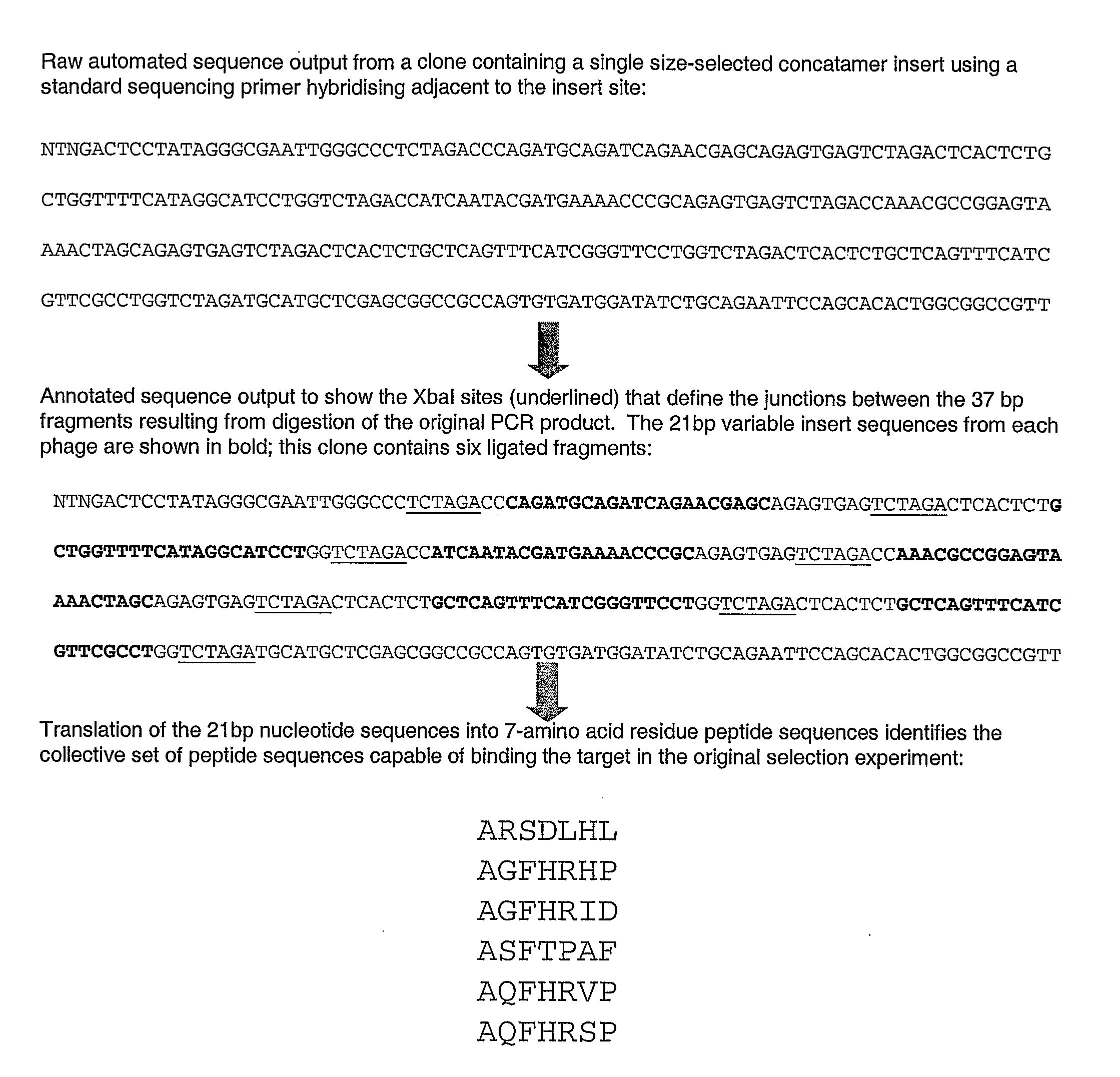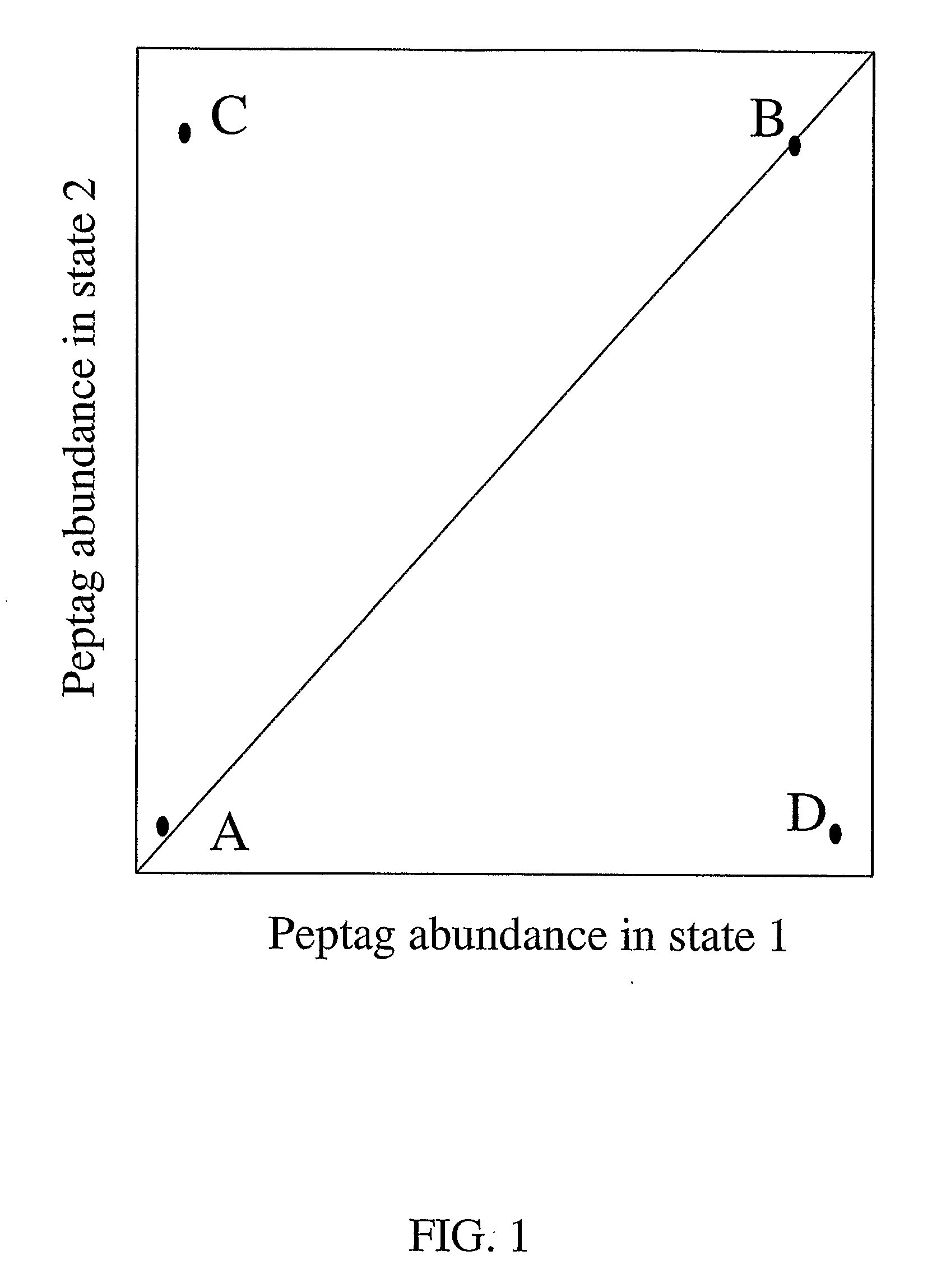Molecular Analysis
a molecular analysis and molecular structure technology, applied in the field of molecular analysis, can solve the problems of difficult to achieve many key complex biological target materials, and difficult to prepare methods. achieve the effects of preventing cross-talk, improving specificity, and improving the specificity of assay
- Summary
- Abstract
- Description
- Claims
- Application Information
AI Technical Summary
Benefits of technology
Problems solved by technology
Method used
Image
Examples
Embodiment Construction
Method of Determining Sequence and Occurrence Frequency of a Number of Variable Gene Inserts that Bind to a Target Molecule
[0048]The variable gene inserts were selected from a seven amino acid peptide phage display library, with an input of 2×1011 phage particles. Therefore all possible seven residue sequences were represented on average more than 50 times.
[0049]The target was prepared by immobilising and purifying IgG immunoglobulin of a monoclonal antibody raised against a known peptide antigen (AEFHRWSSYMVWHK).
[0050]Four rounds of selection were performed on the library, followed by elution, amplification and re-selection. This produced a sub-library.
[0051]Unselective PCR was performed on the variable region encoding the individual peptides from all phage in the sublibrary.
[0052]The PCR was performed using 22 bp primers that are known to hybridise to known sequences just 5′ and just ′3 to the variable insert sequence and each encoding the restriction endonuclease Xbal site, that ...
PUM
 Login to View More
Login to View More Abstract
Description
Claims
Application Information
 Login to View More
Login to View More - R&D
- Intellectual Property
- Life Sciences
- Materials
- Tech Scout
- Unparalleled Data Quality
- Higher Quality Content
- 60% Fewer Hallucinations
Browse by: Latest US Patents, China's latest patents, Technical Efficacy Thesaurus, Application Domain, Technology Topic, Popular Technical Reports.
© 2025 PatSnap. All rights reserved.Legal|Privacy policy|Modern Slavery Act Transparency Statement|Sitemap|About US| Contact US: help@patsnap.com



